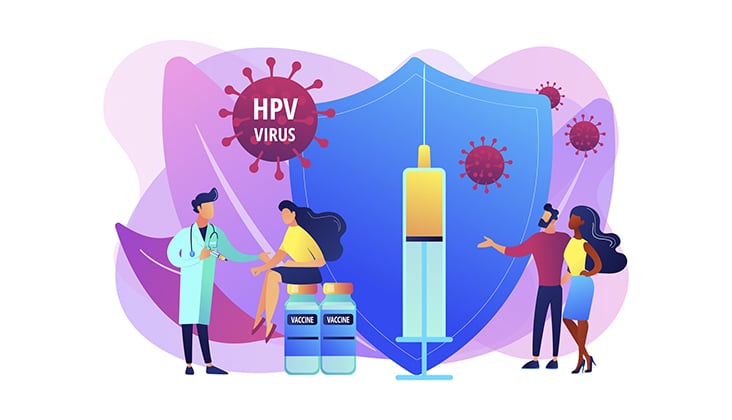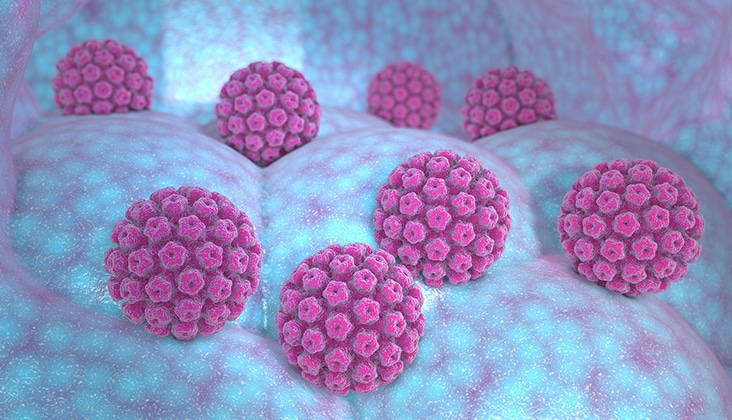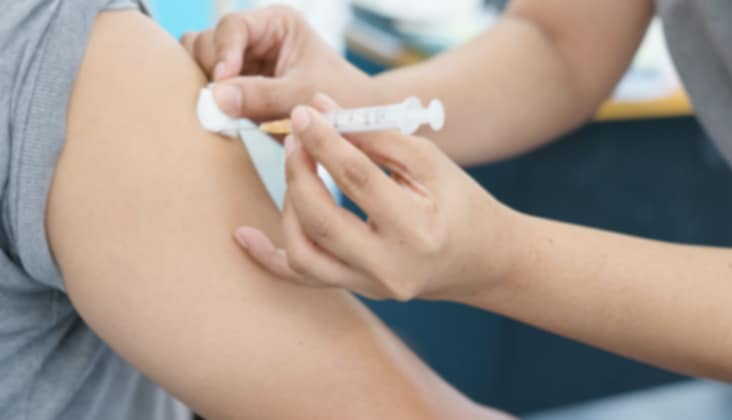Reduce HPV With Immunization
The humanpapilloma virus (HPV) is a group of more than 150 viruses, with some types responsible for causing cancers of the cervix, vulva, vagina, penis, anus, mouth, and throat.

The humanpapilloma virus (HPV) is a group of more than 150 viruses, with some types responsible for causing cancers of the cervix, vulva, vagina, penis, anus, mouth, and throat. HPV is the most common sexually transmitted disease and the US Centers for Disease Control and Prevention (CDC) estimates that approximately 80 million Americans are currently infected and 14 million will acquire the virus each year. In fact, almost all sexually active people will have HPV at some point in their lifetimes. Most HPV infections go away within 1 year to 2 years following infection and do not cause cancer. However, persistent infections with high-risk types (HPV16 and HPV18) can lead to cell changes and cancer. HPV16, the type responsible for cervical cancer, also is linked to oropharyngeal cancer. HPV-related oropharyngeal cancers have been increasing at an alarming rate and have surpassed HPV-related cervical cancers.
Photo Credit: Manjurul / iStock / Getty Images Plus

Vaccines Available
The US Food and Drug Administration (FDA) has approved three vaccines to prevent HPV related viruses: Gardasil®, Cervarix®, and Gardasil 9®. All three protect against HPV 16 and 18; however, as of May 2017, only Gardasil 9 is available in the US. An HPV vaccine has been available for girls ages 9 to 26 since 2005 and for boys since 2011. Currently, it is recommended that all children ages 9 to 13 receive two doses of Gardasil 9, with the second dose given 6 months to 12 months after the first. After age 13, youth should receive three doses, with the first two being given 2 months apart and the third dose given 6 months after the second dose. In 2018, the FDA approved the use of Gardasil 9 for individuals 27 through 45 to assist in preventing HPV-related diseases across a broader population. The CDC followed suit in 2019. Overall, the HPV vaccine is safe with few adverse reactions.
Photo Credit: Pornpak Khunatorn / iStock / Getty Images Plus

Problem of Low Compliance
Despite the availability and proven safety and effectiveness of the HPV vaccine, uptake in the US has been low compared with other childhood vaccines. Factors contributing to low HPV vaccine uptake include: low levels of knowledge regarding HPV and the HPV vaccine, misconceptions and concerns among parents, lack of health care provider recommendation, and lack of supportive systems and polices such as not requiring the vaccine for school entry. Moreover, suboptimal uptake of the HPV vaccine could be attributable in part to the “feminization of HPV.” Specifically, support for HPV prevention activities significantly has struggled due to the following: its association with sexual activity; early research and marketing conducted only among females and focused solely on cervical cancer, thus positioning HPV as a female-specific disease; and the lag in vaccine approval for males. In addition, both vaccine hesitancy and anti-vaccine attitudes in general have become more prevalent in recent years, limiting optimal HPV vaccine uptake.
Photo Credit: Dr_Microbe / iStock / Getty Images Plus

Contraindications for the Vaccines
There are a few contradictions for the HPV vaccine among certain individuals. While data on vaccination during pregnancy are limited, pregnant women should not receive the HPV vaccine. However, no adverse effects have been reported on the developing fetus in cases where the woman was vaccinated but unaware she was pregnant. In addition, individuals allergic to latex should not receive the HPV vaccine via a prefilled syringe as the syringe tip may contain latex. Further, individuals who have an acute illness should wait until their symptoms have passed.
Photo Credit: sefa ozel / iStock / Getty Images Plus

Role of Dental Hygienists
Dental hygienists are leaders in health education and promotion both in their clinic setting as well as in the community. As such, dental hygienists are uniquely positioned to increase uptake of the HPV vaccine, especially when they work in a practice that includes children and youth. Dental hygienists are trained to provide oral health education and oral cancer examinations. Thus, educating patients about how to prevent cancers and providing oral cancer examinations are within dental hygienists’ scope of practice. Additionally, because at least one state has legislation allowing dentists to provide HPV vaccinations, others are likely to follow, which strengthens the call to action on the part of dental hygienists.
Photo Credit: Visual Generation / iStock / Getty Images Plus

Become a Pro-Vaccine Practice
Health care professionals must be health literate about this vaccine, the cancers it prevents, and its connection to oral health. First, be well informed about oral and oropharyngeal cancers. Ensure the use of the most recent research findings from the most reliable sources such as the Food and Drug Administration (FDA), National Institutes of Health, Centers for Disease Control and Prevention (CDC), National HPV Vaccine Roundtable, President’s Cancer Panel, and American Dental Association. Sign up for current list serves from these organizations. Second, ensure all staff are thoroughly trained and comfortable with providing a comprehensive oral cancer examination.
Once well-armed with current information and skills, take a lead role in the clinic setting.
Photo Credit: Naeblys / iStock / Getty Images Plus

Helping Parents Get On Board
Educating parents about their children’s need for the HPV vaccine can be challenging, but the CDC has developed some useful suggestions. Previously, the FDA and CDC suggested different age ranges for Gardasil 9, which impacted whether health insurance payers would cover the vaccine at different age levels and may have confused parents. However, on June 26, 2019, the CDC adopted the same age range (9 to 45) as recommended by the FDA. The CDC also changed its age recommendation for catch-up vaccinations for both women and men to age 26, which is the same as the FDA’s recommendation.

